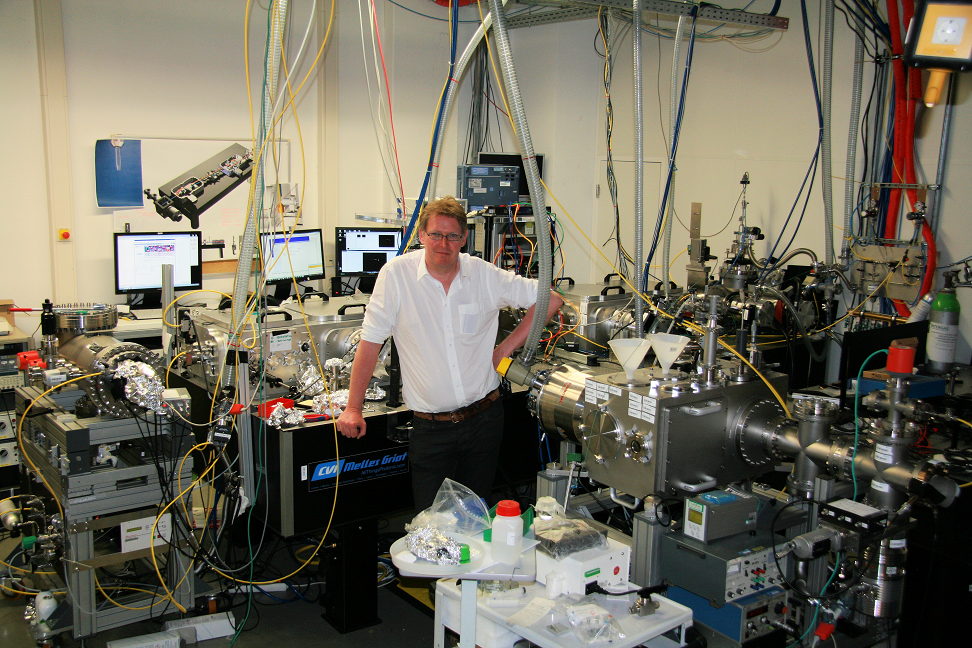
Providing long-term innovation
‘If ARCNL succeeds in conducting high-grade fundamental research with direct relevance for industry, we have established something truly unique,’ says Marc Vrakking, Chairman of ARCNL’s Scientific Advisory Committee.

How did you get involved in ARCNL?
‘Since my personal research activities are very closely related to the ideas ASML had about the focus of ARCNL, they asked my help in founding the research center. Now my role as Scientific Advisory Committee member is primarily to advise the center during this first phase. What are the most important scientific themes, and how does one organize a research center in an effective way? ASML is set up like AMOLF and I personally have always been charmed by the way AMOLF is organized: it consists of teams of creative young talent, led by relatively young group leaders with large responsibilities. Such a system leads to very high output per euro invested.’
What do you consider the main challenge for ARNCL?
‘To find and sustain the right balance between the expectations of ASML and the broader scientific scope the center needs, since it is also financed from public means. Due to the way the center has been founded, the current research has a strong focus on EUV lithography. The challenge for ARCNL is to integrate these very concrete questions into a research program that is scientifically highly interesting as well. I think the prospects are very good. The development of stable and coherent EUV sources and ancillary novel microscopy and spectroscopy techniques are hot subjects in international science.’
How special is ARCNL in an international perspective?
‘The idea of government and industry sharing research strategies is not new in itself. But the center’s inception is rather unique. I couldn’t name many examples of similar organizations. For example, here in Germany, we have many institutes conducting applied research together with industry. But ARCNL is a fundamental research center, with a sharp focus on relevance for industry. It is really aimed at long-term innovations. In the old days, we had industrial laboratories with more or less the same mission. Think of Philips Natlab and Bell labs. Most of these institutes have ceased to exist. ARCNL is now partly filling this gap.’
Besides lithography, what other applications can profit from the research?
‘The generation and use of extreme ultraviolet radiation is not only interesting for lithography purposes, but also for other optical or laser-based research. These short wavelengths are for example needed to determine nanometer-sized structures in biological samples. Traditionally, we use synchrotrons to do this kind of research. The advantage of EUV is that you can actually make movies of structural changes over time. It is also possible to image matter that cannot be crystallized, which would be necessary for traditional x-ray diffraction.’
ARCNL has been in operation for two years now. How are they doing?
‘So far, the center seems to be able to find a good balance between fundamental research and relevance for ASML. The groups work on questions with a clear relevance for ASML, which are also scientifically very exciting. I have high expectations for the future.’
Marc Vrakking is an internationally renowned scientist in the field of ultrafast laser physics, and one of the Directors of the Max Born Institute in Berlin.
Read also the interviews with
- Joost Frenken, ARCNL’s director : The beginning of a new tradition
- Wim van der Zande, ASML Director of Research: Creating a mutual understanding
- Pavel Antonov, PhD student: Proud pioneering PhD student
- Watch ARCNL video: What do we need for tomorrow’s smartphone?
- Maarten Voncken & Wim Symens, researchers ASML: Supporting a long-term relationship : New ASML liaison at ARCNL
- Ronnie Hoekstra (ARCNL), Caspar van der Wal (RUG): One year into partnership University of Groningen: how is it going and what to expect?







